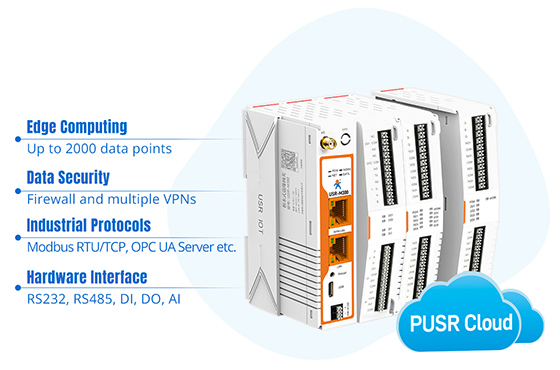In today’s highly connected industrial environment, reliable communication between devices is more important than ever. Whether it’s factory automation, energy management, or logistics, businesses rely on seamless data transfer to ensure efficiency, accuracy, and control. This is where serial device servers and industrial gateways come into play. These devices bridge the gap between traditional serial equipment and modern network infrastructures, enabling industries to leverage their existing hardware while embracing the benefits of digital connectivity.
What Is a Serial Device Server?
A serial device server is a networking device that converts serial communication protocols, such as RS-232, RS-422, or RS-485, into Ethernet or TCP/IP connections. In simple terms, it allows older serial devices to communicate over modern networks without needing to replace existing equipment.
Many industrial systems, such as barcode scanners, sensors, programmable logic controllers (PLCs), and measurement instruments, still use serial ports for data transfer. However, Ethernet has become the standard for modern networks due to its speed, reliability, and scalability. A serial device server acts as a bridge, enabling legacy devices to integrate into a networked environment efficiently.
What Is an Industrial Gateway?
An industrial gateway is a device that connects industrial equipment to larger IT or IoT (Internet of Things) systems. While a serial device server focuses on serial-to-Ethernet conversion, an industrial gateway provides broader functionality, including protocol conversion, data aggregation, and remote management.
Industrial gateways are essential in industries that rely on multiple communication protocols. They enable devices using Modbus, Profibus, CAN bus, or other industrial protocols to connect to cloud platforms, SCADA systems, or enterprise networks. By doing so, industrial gateways facilitate real-time monitoring, data analysis, and remote control, helping businesses optimise operations and reduce downtime.
How Serial Device Servers and Industrial Gateways Work
Both devices work on the principle of protocol conversion and network integration. Here’s how they function:
-
Serial Device Server:
-
Receives data from a serial device using RS-232, RS-422, or RS-485 standards.
-
Converts the data into TCP/IP or UDP packets suitable for Ethernet networks.
-
Transmits the data to computers, servers, or cloud-based systems.
-
Enables remote access and management of serial devices over the network.
-
-
Industrial Gateway:
-
Collects data from multiple industrial devices across different protocols.
-
Converts this data into a format compatible with IT systems or IoT platforms.
-
Provides secure communication, filtering, and monitoring.
-
Supports remote configuration and integration with cloud services.
-
Applications of Serial Device Servers and Industrial Gateways
These devices have a wide range of applications across industrial and commercial sectors. Some of the key use cases include:
1. Factory Automation
In manufacturing, machinery and sensors often use serial communication. Serial device servers allow these machines to connect to Ethernet networks, enabling centralised monitoring and control. Industrial gateway further enhance automation by integrating multiple protocols and feeding data into SCADA or ERP systems.
2. Energy Management
Power plants, substations, and energy distribution systems rely on sensors and controllers for monitoring voltage, current, and energy usage. By using industrial gateways, operators can aggregate data from various devices and analyse it in real time, improving efficiency and reducing energy waste.
3. Transportation and Logistics
In transportation systems, devices such as ticketing machines, GPS trackers, and sensors often communicate using serial ports. Serial device servers allow these devices to transmit data over Ethernet, enabling fleet management, real-time tracking, and improved operational efficiency.
4. Healthcare and Medical Equipment
Many medical devices, including patient monitors and laboratory instruments, still use serial communication. Serial device servers help hospitals and laboratories integrate these devices into modern hospital networks, ensuring timely data collection and remote monitoring.
5. Retail and Point of Sale (POS) Systems
POS terminals, barcode scanners, and receipt printers often use serial connections. By connecting them to a network via serial device servers, retail businesses can centralise transaction data, monitor equipment, and improve customer service.
Benefits of Using Serial Device Servers and Industrial Gateways
The advantages of these devices go beyond simple connectivity. Some of the key benefits include:
-
Cost Efficiency:
-
Avoid replacing legacy equipment by integrating it into modern networks.
-
Reduce maintenance costs and downtime.
-
-
Remote Access and Management:
-
Monitor and control devices from anywhere via the network.
-
Perform updates, troubleshooting, and configuration remotely.
-
-
Enhanced Security:
-
Industrial gateways provide encryption, authentication, and secure protocols to protect sensitive data.
-
Reduce the risk of cyber-attacks in industrial environments.
-
-
Scalability:
-
Easily add new devices to the network without redesigning the system.
-
Expand industrial networks to include IoT devices and cloud platforms.
-
-
Data Integration:
-
Consolidate data from multiple devices and protocols for analysis.
-
Support advanced analytics, predictive maintenance, and decision-making.
-
Features to Consider When Choosing a Serial Device Server or Industrial Gateway
When selecting the right device for your needs, it is important to consider several key features:
-
Supported Protocols: Ensure compatibility with the communication standards used by your devices.
-
Number of Ports: Choose a server or gateway with sufficient serial and Ethernet ports.
-
Data Transmission Speed: Verify that the device supports the required data rates.
-
Security Features: Look for encryption, VPN support, and firewall capabilities.
-
Remote Management: Consider devices that allow easy configuration and monitoring over the network.
-
Industrial-Grade Build: For harsh environments, select devices with rugged housing, wide temperature range, and durability.
Industrial Integration and the Future
As industries increasingly adopt IoT and digital transformation strategies, the demand for serial device servers and industrial gateways continues to grow. These devices are crucial for integrating legacy equipment with modern network infrastructures, enabling real-time data analysis, predictive maintenance, and smart automation.
With the development of Industry 4.0, factories, warehouses, and utilities rely more on connected devices and cloud analytics. Serial device servers and industrial gateways act as enablers, ensuring that existing hardware remains valuable while supporting the shift towards intelligent, data-driven operations.
Conclusion
Serial device servers and industrial gateways play a critical role in bridging the gap between legacy industrial equipment and modern network technology. By converting protocols, providing remote access, and enabling secure data transmission, these devices support industries in improving efficiency, reducing costs, and embracing digital transformation.
Whether used in manufacturing, energy, healthcare, retail, or logistics, serial device servers and industrial gateways allow businesses to future-proof their operations while leveraging existing equipment. They are essential tools for any organisation seeking to stay competitive in a connected, data-driven world.
With the rise of Industry 4.0 and the Internet of Things, the importance of these devices will only grow, making them a cornerstone of modern industrial communication and smart infrastructure.
See more article click here.







0 Comments